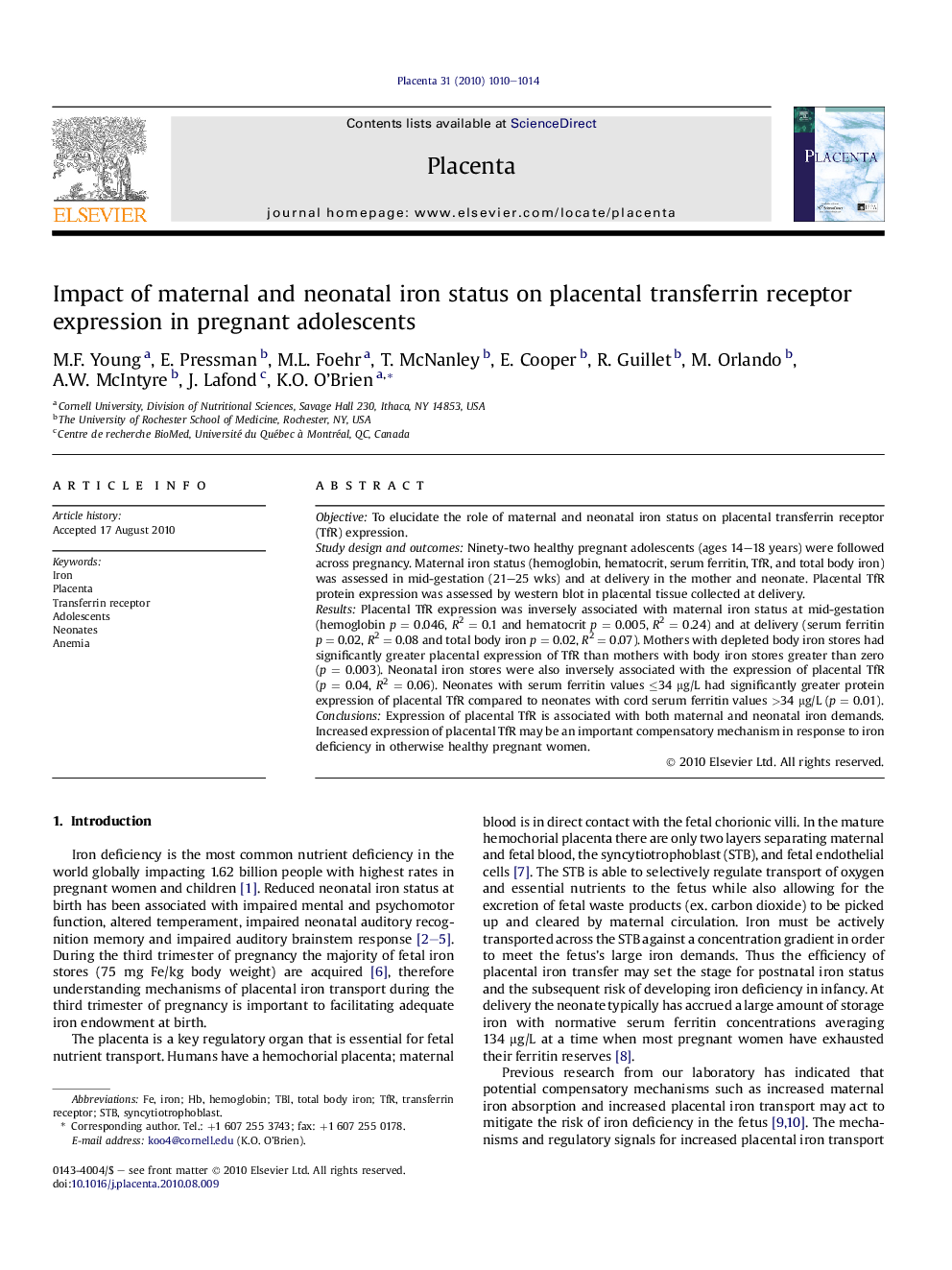| Article ID | Journal | Published Year | Pages | File Type |
|---|---|---|---|---|
| 2789554 | Placenta | 2010 | 5 Pages |
ObjectiveTo elucidate the role of maternal and neonatal iron status on placental transferrin receptor (TfR) expression.Study design and outcomesNinety-two healthy pregnant adolescents (ages 14–18 years) were followed across pregnancy. Maternal iron status (hemoglobin, hematocrit, serum ferritin, TfR, and total body iron) was assessed in mid-gestation (21–25 wks) and at delivery in the mother and neonate. Placental TfR protein expression was assessed by western blot in placental tissue collected at delivery.ResultsPlacental TfR expression was inversely associated with maternal iron status at mid-gestation (hemoglobin p = 0.046, R2 = 0.1 and hematocrit p = 0.005, R2 = 0.24) and at delivery (serum ferritin p = 0.02, R2 = 0.08 and total body iron p = 0.02, R2 = 0.07). Mothers with depleted body iron stores had significantly greater placental expression of TfR than mothers with body iron stores greater than zero (p = 0.003). Neonatal iron stores were also inversely associated with the expression of placental TfR (p = 0.04, R2 = 0.06). Neonates with serum ferritin values ≤34 μg/L had significantly greater protein expression of placental TfR compared to neonates with cord serum ferritin values >34 μg/L (p = 0.01).ConclusionsExpression of placental TfR is associated with both maternal and neonatal iron demands. Increased expression of placental TfR may be an important compensatory mechanism in response to iron deficiency in otherwise healthy pregnant women.
